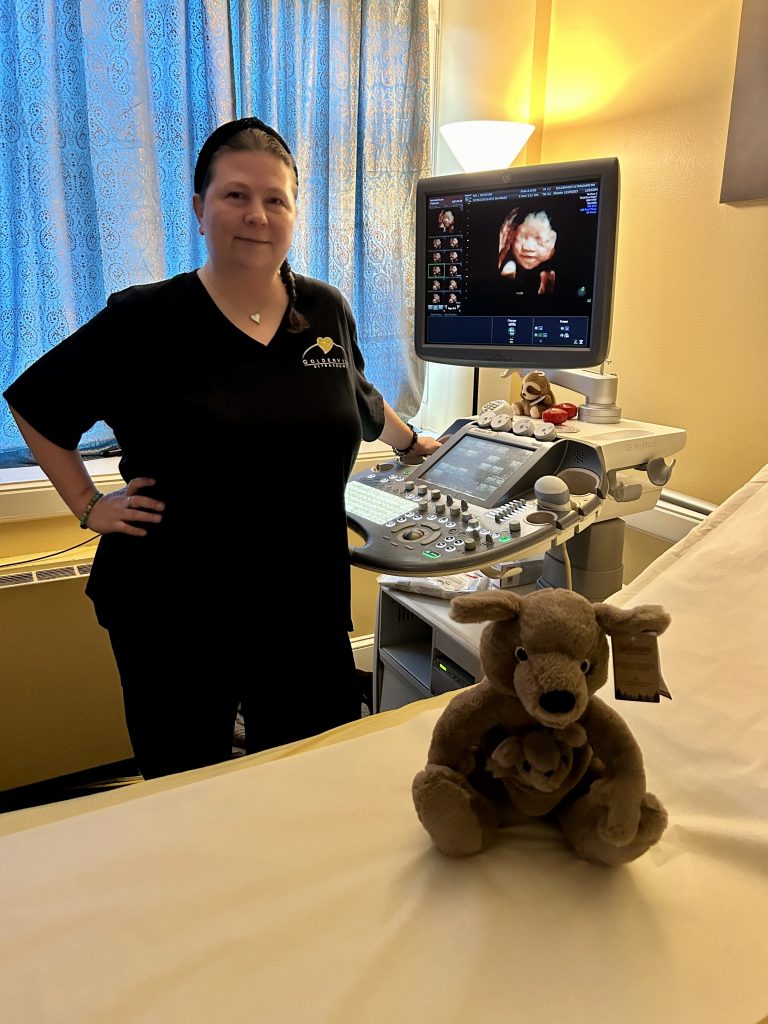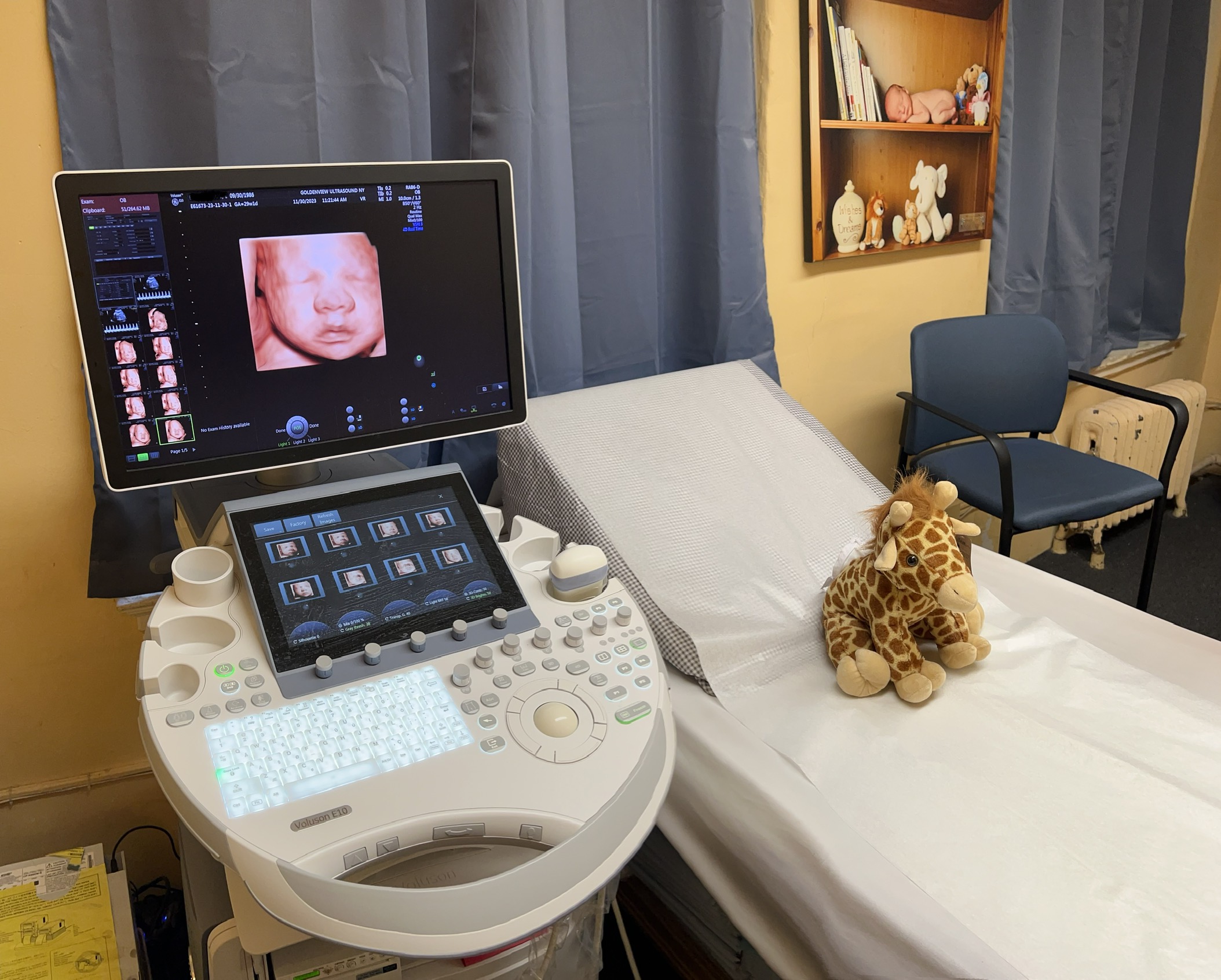🗓️ The Golden Window: Optimal Timing for Your 3D/4D/HDLive Ultrasound Keepsake
The anticipation of meeting your baby is magical, and an advanced ultrasound is the first introduction. To ensure that first meeting captures the clearest, most detailed image of your baby’s face, timing is everything.
At GoldenView Ultrasound, we utilize the most advanced 5D HDLive technology. Through years of experience, we have identified the “Golden Window”—the specific gestational age where fetal development and positioning align perfectly for that cherished, portrait-quality image.
This guide explains why scheduling your session between 26 and 32 weeks is the key to capturing precious moments that last a lifetime.

Why Timing Matters: The Science of the “Golden Window”
The timing of your advanced ultrasound directly impacts image quality because the clarity depends on two constantly changing factors: fetal fat deposition and available amniotic fluid.
1. Fetal Fat Deposition (The Chubby Cheeks Factor)
The primary reason to schedule your scan after 26 weeks is fetal maturation.
- Before 26 Weeks: The baby is leaner, and facial features appear thinner or more skeletal, as they have not yet deposited the subcutaneous fat needed for the cute, rounded cheeks and defined jawline.
- The Optimal Period (26 to 32 Weeks): During this time, the baby gains weight and deposits fat rapidly. This fat deposition rounds out the face, making features recognizable and ensuring those precious “chubby cheek” portraits that parents desire.
2. Available Amniotic Fluid (The Window Factor)
Amniotic fluid acts as the perfect acoustic medium—it’s the clear window through which the sound waves must travel to reflect off the baby’s face.
- During 26-32 Weeks: There is still ample amniotic fluid surrounding the baby’s face, allowing the 3D/4D probe to capture a sharp, clear image.
- After 32 Weeks: As the baby grows larger and moves into the birthing position, the space decreases, and fluid volume relative to the baby shrinks. The baby often presses tightly against the placenta or the uterine wall, making a clear, unobstructed facial view very challenging.
The Bottom Line: The ideal range of 26 to 32 weeks balances the baby’s fully defined features with the necessary fluid and space for capture.
Preparing for Clarity: Factors Influencing Image Quality
Even within the Golden Window, a successful session requires optimal preparation.

1. Hydration is Your #1 Tool 💧
Adequate amniotic fluid levels are crucial for clear images. The clearer the fluid, the clearer the picture.
- Preparation: We recommend expectant mothers increase their water intake for 3-5 days leading up to the ultrasound. Drinking a large glass of water immediately before the session does not work; sustained hydration is key to maintaining high fluid levels.
2. Baby’s Position in the Womb
The baby’s position is the most common challenge in any ultrasound.
- The Ideal View: The best image quality is achieved when the baby is facing upwards, away from the mother’s spine, with no hands or feet covering the face.
- Encouraging Movement: About 20-30 minutes before your appointment, consume a small, healthy snack or cold, non-caffeinated sweet beverage (like orange juice). This gentle sugar intake often stimulates fetal movement, encouraging the baby to stretch, yawn, or turn into the perfect position.
3. The Technology Edge: Choosing HDLive (5D)
The technology you choose dictates the level of detail you capture.
- 5D HDLive: Choosing a session with HDLive technology significantly enhances clarity. This advanced method uses virtual lighting to create realistic shadows and depth, ensuring the images look less like a medical scan and more like a high-definition photograph.
The Dynamic Benefits of Your 4D/5D Experience
Your session at GoldenView Ultrasound is an investment in emotional bonding and a unique family event.
1. Capturing Real-Time Moments
The 4D component adds the dimension of time, providing dynamic, real-time video footage.
- Unforgettable Expressions: You can witness your baby’s facial expressions, stretches, or thumb-sucking—behaviors that reveal their personality before birth.
- Enhanced Bonding: Seeing the baby in continuous motion solidifies the emotional connection for all present, fostering a deeper sense of reality and preparation.
2. Safety Commitment and Professional Standards
4D/5D ultrasounds are safe because they rely on sound waves, not radiation. Our commitment to safety is paramount:
- ALARA Principle: All our certified sonographers adhere strictly to the ALARA Principle (As Low As Reasonably Achievable), minimizing energy exposure while obtaining stunning images.
- Professional Equipment: We use the latest medical-grade ultrasound machines, ensuring both the quality of the image and the safety of the procedure.
3. Making Memories Last
Preserving these moments is central to the experience:
- Heartbeat Keepsakes: We offer unique keepsakes like the Heartbeat Huggable—a plush toy containing your baby’s recorded heartbeat—turning a sound into a tangible, lifelong memory.
- Digital Delivery: All our premium packages include digital images and video footage for easy sharing and permanent preservation.
Conclusion: Scheduling Your Introduction
Choosing the right time for your advanced ultrasound maximizes both the clarity of your images and the emotional significance of the moment. We recommend contacting us early to secure your appointment within the 26 to 32-week Golden Window.
Whether you are in San Antonio, Boston, or New York City, our transparent pricing and commitment to a safe, memorable experience ensure that your first meeting with your baby is perfect.
Ready to schedule your HDLive introduction? Visit our website or call your nearest location today.

